Did you know that the Calathea Warscewiczii, also known as the “Jungle Velvet,” is one of the most sought-after indoor plants in the United Kingdom? Its striking appearance and impressive foliage make it a true showstopper in any home or office environment. But here’s the catch – this exquisite plant requires specific care to thrive in the comfort of your UK home.
That’s why I’ve crafted this comprehensive Calathea Warscewiczii care guide, tailored specifically to the needs of UK plant enthusiasts like you. From its stunning appearance to its light requirements, watering tips, fertilizing and soil needs, pruning and maintenance, propagating, and repotting suggestions – I’ve got you covered with expert advice and essential tips.
Appearance of Calathea Warscewiczii
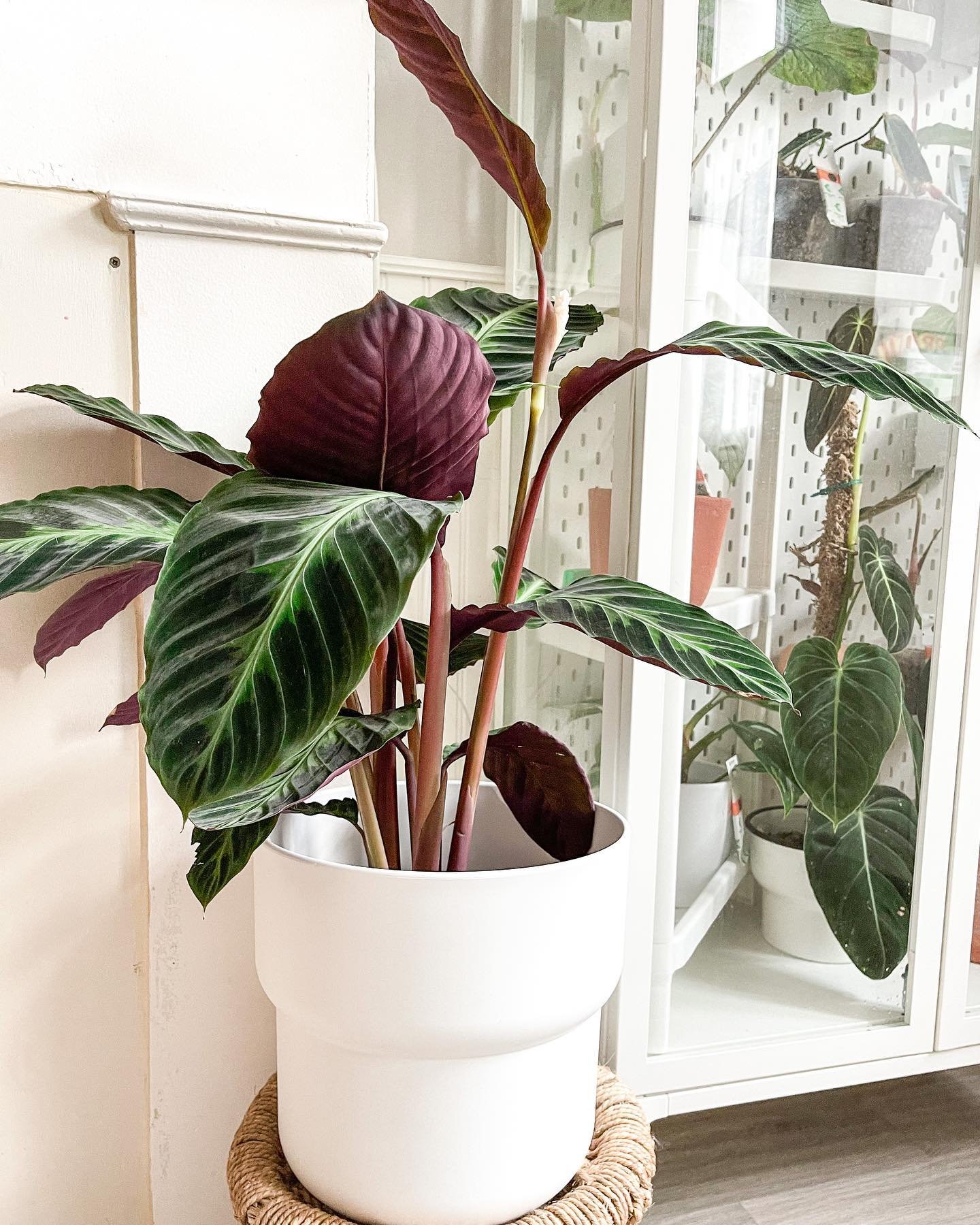
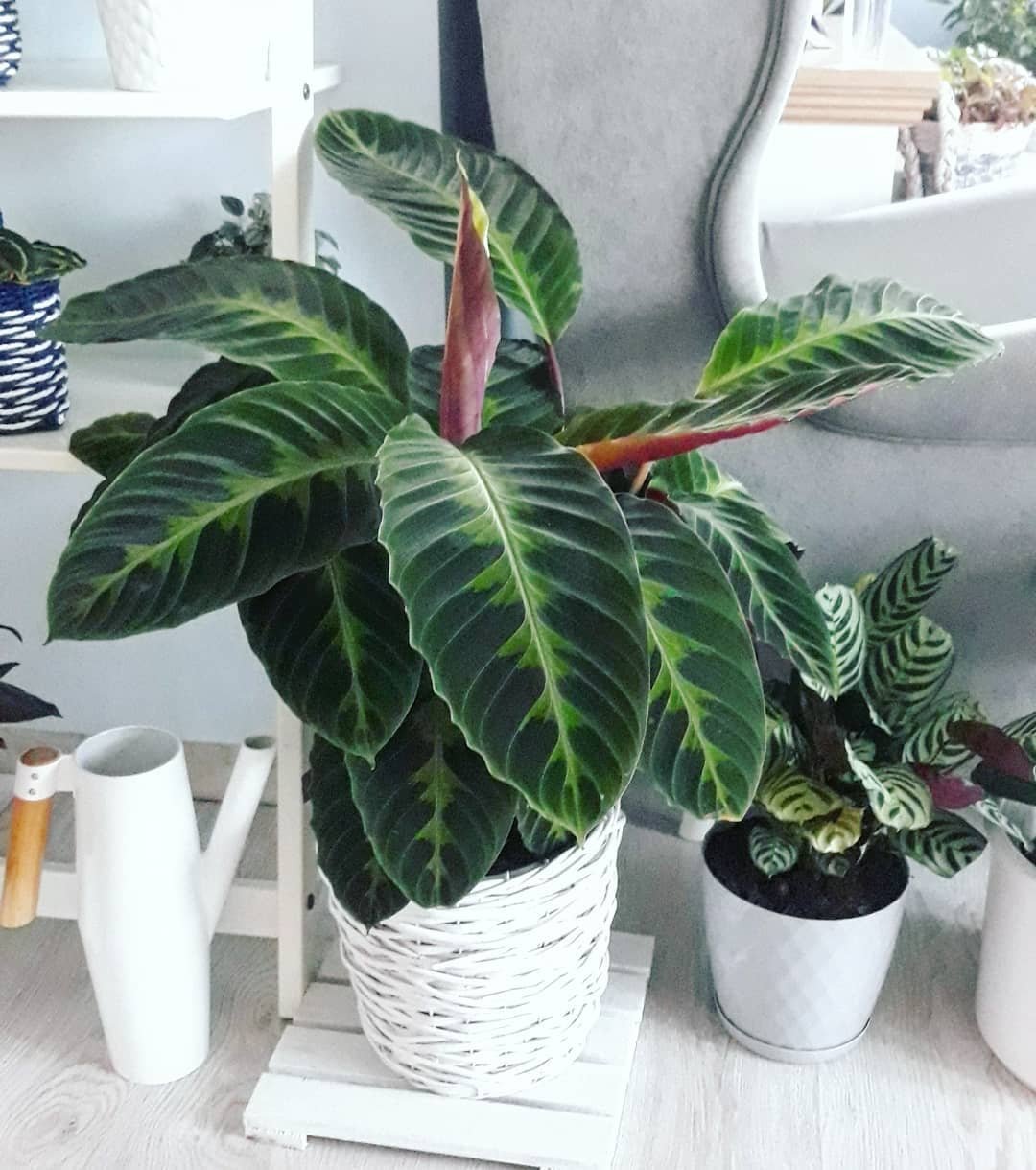
Calathea Warscewiczii, also known as Calathea Warscewiczii Jungle Velvet, is a popular indoor plant in the UK due to its stunning appearance. Its large, oval leaves feature deep green coloration on the upper side and a rich burgundy shade on the undersides, creating a beautiful contrast. The prominent veins add further interest, making it a true eye-catcher in any plant collection.
 The Calathea Warscewiczii, or ‘Jungle Velvet‘, has soft leaves that move with the light, opening by day and closing at night to save moisture. A stunning display of nature’s adaptability.
The Calathea Warscewiczii, or ‘Jungle Velvet‘, has soft leaves that move with the light, opening by day and closing at night to save moisture. A stunning display of nature’s adaptability.
Light Requirements for Calathea Warscewiczii
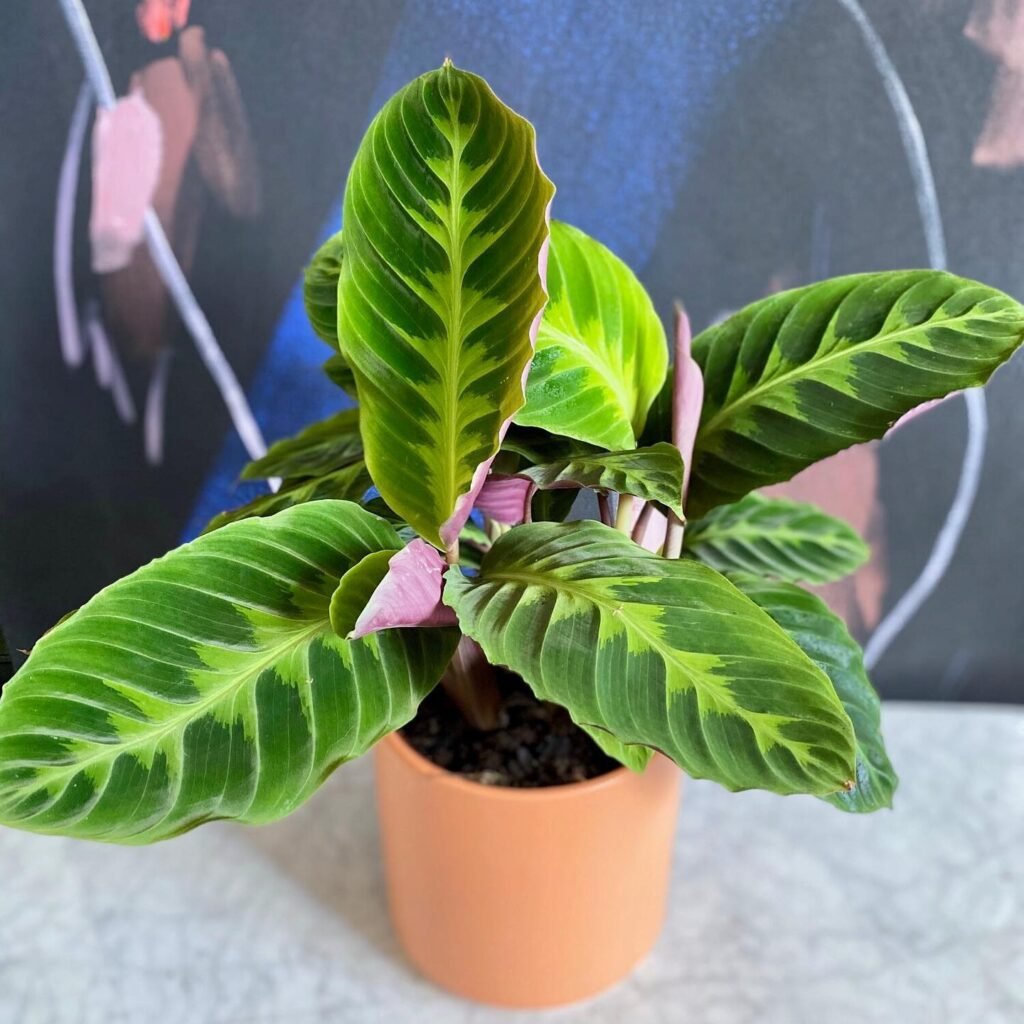
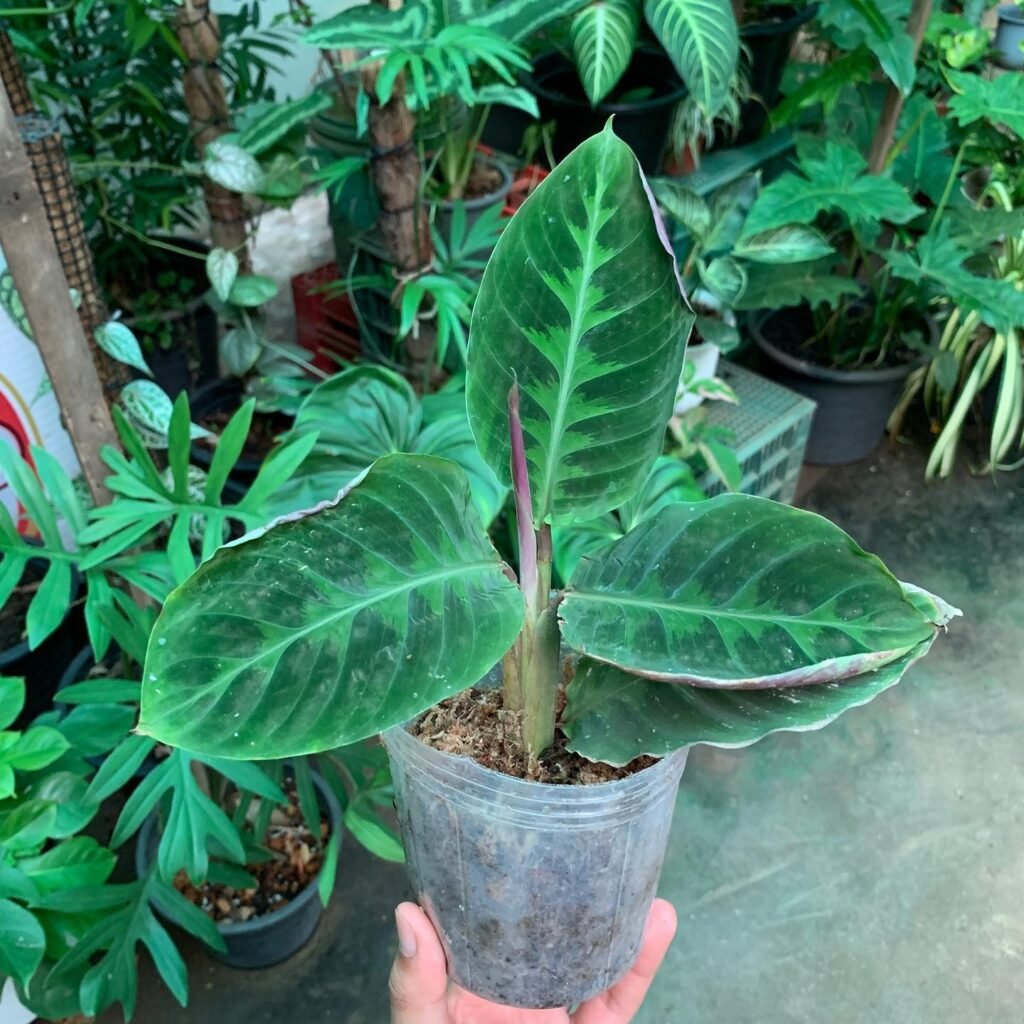
When it comes to providing the ideal light conditions for your Calathea Warscewiczii, it’s important to strike the right balance. This stunning plant thrives in bright, indirect light, which replicates its natural habitat in the jungle. Keep in mind that direct sunlight can be harmful to the delicate leaves, causing them to burn or fade. Therefore, placing your Calathea Warscewiczii near an east or west-facing window is a great way to ensure it receives the optimal amount of light without risking damage.
If your home has limited natural light, don’t worry! You can still nurture your Calathea Warscewiczii by supplementing it with a grow light. This artificial light source can provide the necessary brightness and mimic natural sunlight. Simply position the grow light at an appropriate distance from the plant, ensuring it receives the recommended intensity for proper growth.
Remember, Calathea Warscewiczii is a jungle velvet beauty that thrives in the dappled shade of its natural habitat. By recreating these light conditions in your home, you’ll be rewarded with vibrant foliage and a flourishing plant.
So, whether you’re fortunate enough to have abundant natural light streaming through your windows or need to rely on artificial lighting, make sure to prioritize the light requirements of your Calathea Warscewiczii. Provide it with the right conditions, and you’ll enjoy its lush foliage and stunning vibrancy in any bright corner of your UK home.

Watering Tips for Calathea Warscewiczii
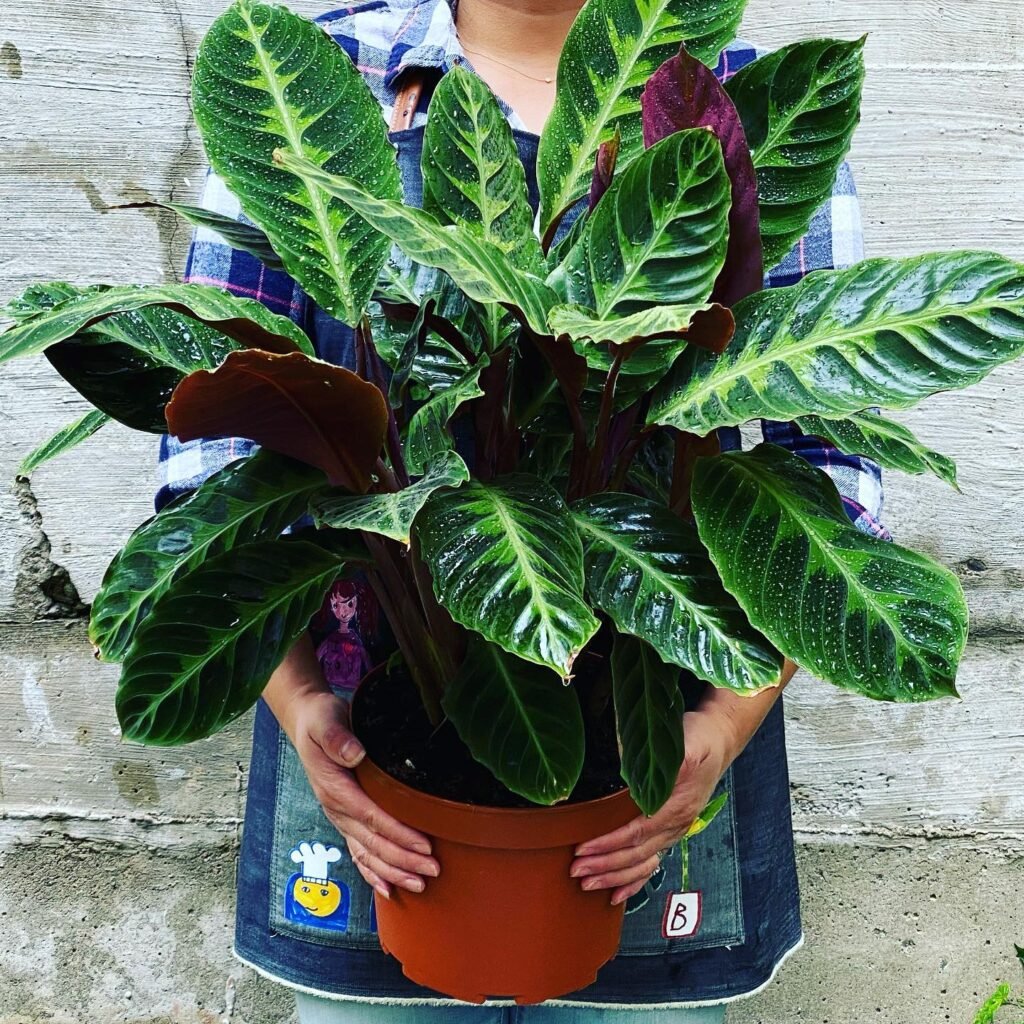
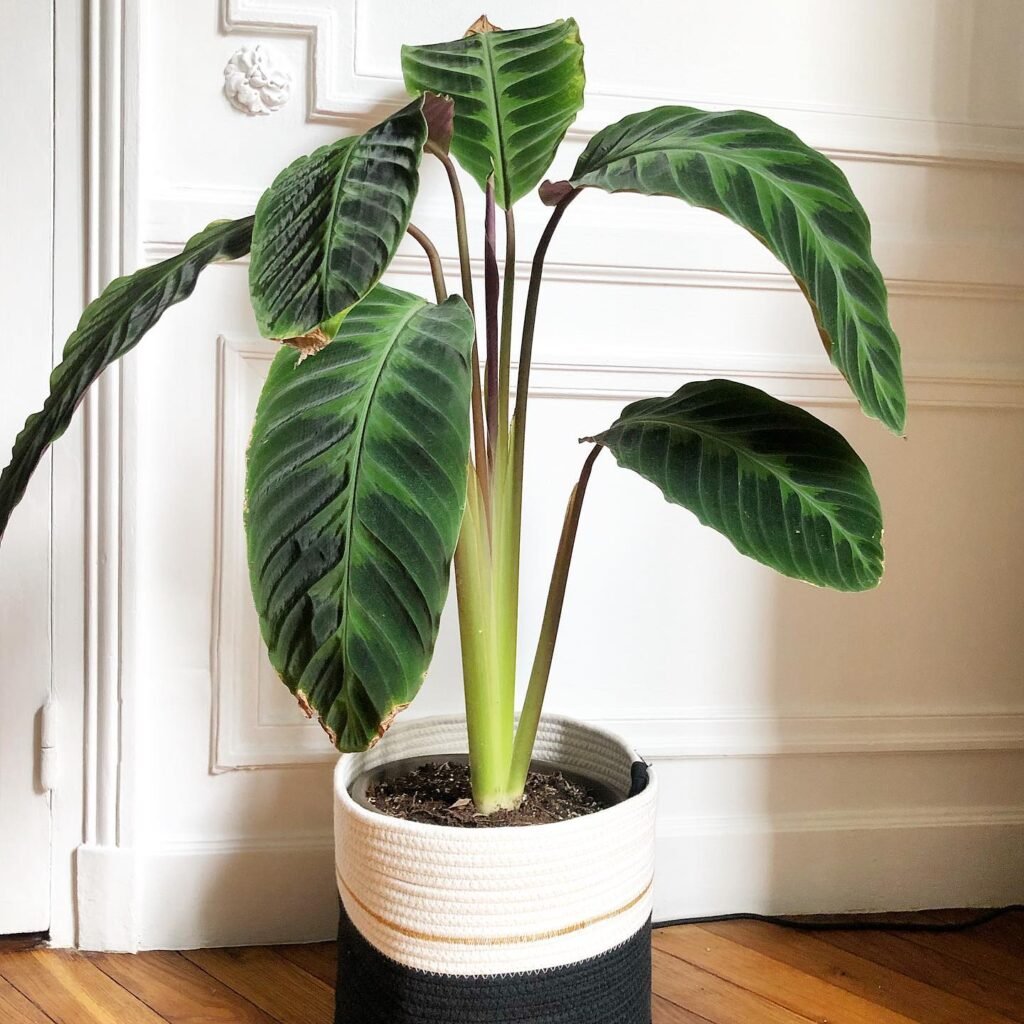
Proper hydration is essential for maintaining the health of your Calathea Warscewiczii. This stunning plant prefers consistently moist soil, but it’s important to ensure it doesn’t become overly soggy. To determine when to water your plant, simply touch the top inch of soil – if it feels dry, it’s time to water.
When watering your Calathea Warscewiczii, pour water evenly throughout the pot until it starts to drain from the bottom. This helps to ensure that the roots receive adequate water without allowing excess moisture to accumulate. Remember to discard any water that collects in the saucer, as standing water can lead to root rot.
In addition to proper watering, Calathea Warscewiczii appreciates higher humidity levels to replicate its natural tropical environment. If the air in your home is dry, you can help maintain the necessary humidity by regularly misting the leaves with water. Alternatively, you can place a humidifier nearby to create a more humid atmosphere.
If your Calathea Warscewiczii begins to develop crispy or brown leaf edges, it may indicate that the air is too dry. Increasing humidity levels can help prevent this issue and promote healthy growth.
- Water your Calathea Warscewiczii when the top inch of soil is dry
- Water evenly throughout the pot until it drains from the bottom
- Discard any water that collects in the saucer
- Mist the leaves regularly or use a humidifier to maintain humidity levels

Fertilizing and Soil for Calathea Warscewiczii


When it comes to ensuring the health and vitality of your Calathea Warscewiczii, proper fertilizing and soil selection play a vital role. The right nutrients and soil conditions will help your plant thrive and display its stunning foliage to its full potential. Here are some essential tips to keep in mind:
- Choose a well-draining potting mix: Calathea Warscewiczii prefers a peat-based potting mix that allows excess water to flow through while retaining the necessary moisture. This helps prevent waterlogging, which can lead to root rot and other issues.
- Ensure moisture retention: Despite its preference for well-draining soil, it’s important to maintain a consistent level of moisture. The peat-based mix helps retain adequate moisture levels without causing waterlogging.
- Select a balanced, water-soluble plant food: For optimal growth and development, use a balanced, water-soluble plant food specifically formulated for houseplants. This ensures your Calathea Warscewiczii gets the necessary nutrients it needs to flourish.
- Feed during the active growing season: During the spring and summer months, when your plant is actively growing, fertilize it every two to four weeks. This frequency helps support healthy growth and vibrant foliage.
- Adjust fertilization frequency in the fall and winter: As the growth rate slows down during the fall and winter months, reduce the frequency of fertilization to once a month. This ensures your plant still receives adequate nutrients while respecting its natural growth cycle.

Pruning and Maintenance of Calathea Warscewiczii

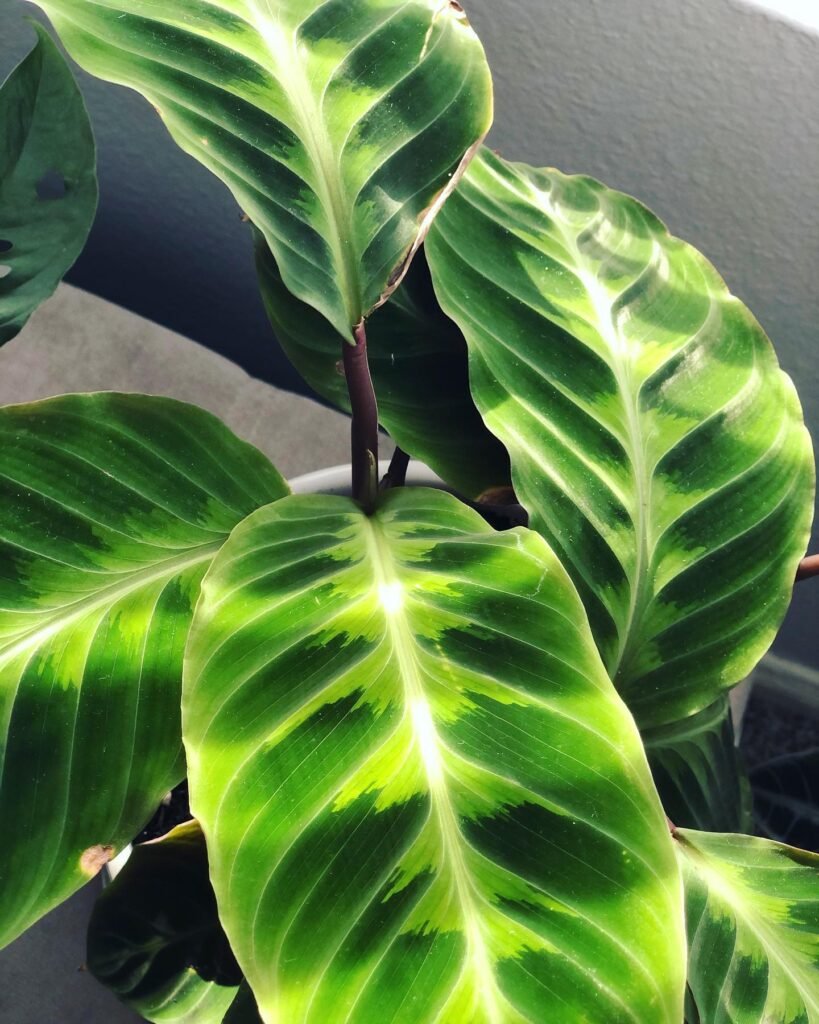
Regular pruning and maintenance are essential for the health and beauty of your Calathea Warscewiczii. By following these simple care tips, you can ensure that your plant thrives and remains vibrant in your indoor space.
Trimming Yellow or Brown Leaves
One important aspect of Calathea Warscewiczii care is removing any yellow or brown leaves. These discolored leaves can be a sign of stress or improper care. To maintain the plant’s overall health, use a pair of clean, sharp scissors or pruning shears to trim the damaged leaves close to the stem. This allows the plant to redirect its energy towards new growth and keeps it looking its best.
Dusting the Leaves
To keep your Calathea Warscewiczii looking fresh and vibrant, it’s important to periodically remove dust from the leaves. This helps the plant maintain optimal photosynthesis and ensures a healthy appearance. Take a soft, damp cloth and gently wipe each leaf, being careful not to apply too much pressure. This simple maintenance task will keep your plant looking its best.
“Regular pruning and maintenance are crucial for the health and well-being of Calathea Warscewiczii. By trimming discolored leaves and dusting the foliage, you can promote better growth and maintain its vibrant appearance.”
With these pruning and maintenance tips, you can provide the necessary care for your Calathea Warscewiczii. By removing damaged leaves and keeping the foliage clean, you’ll ensure a healthy and striking plant that enhances your indoor space.

Propagating Calathea Warscewiczii
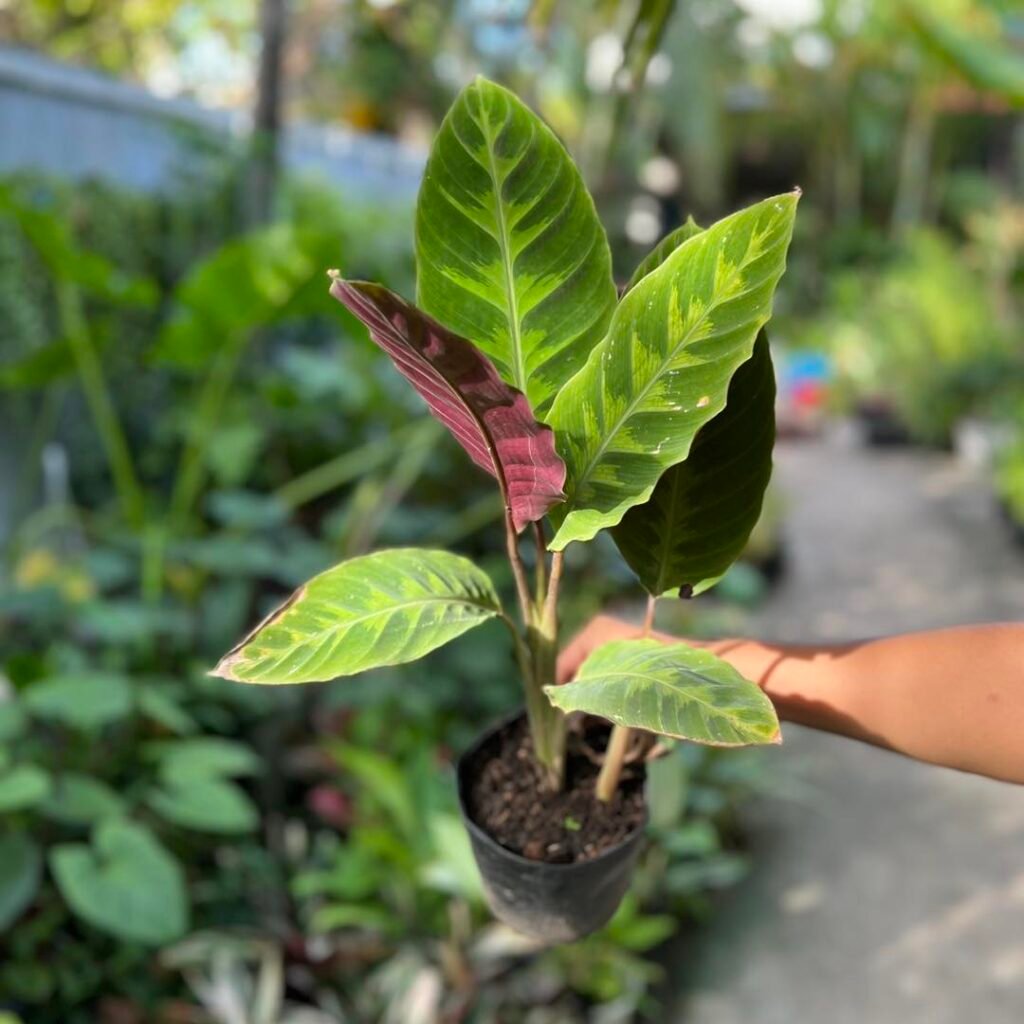
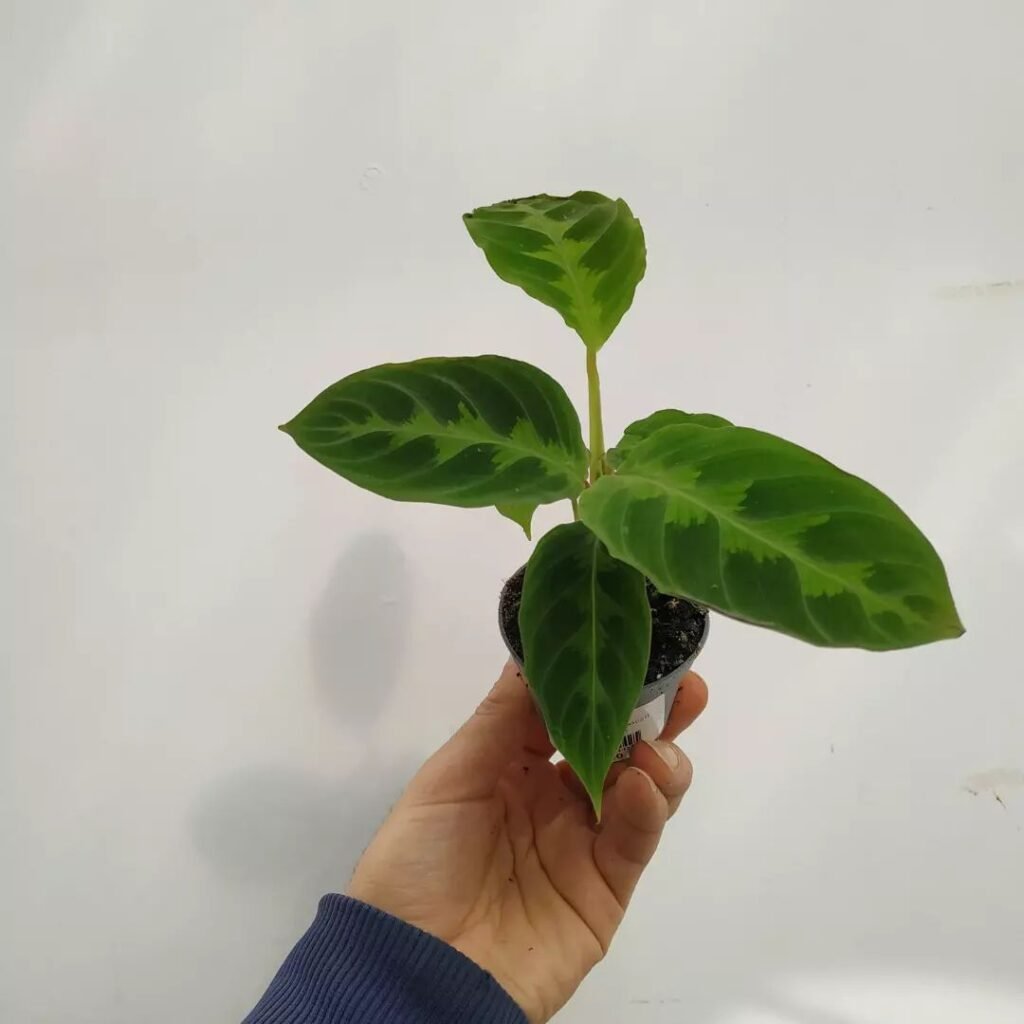
If you want to expand your Calathea Warscewiczii collection or share the joy of this plant with others, you can propagate it through division. Carefully separate the plant into smaller clumps, ensuring each division has healthy roots. Plant the divisions in individual pots using a well-draining potting mix, and provide the same care as established plants.

Repotting Tips for Calathea Warscewiczii
Calathea Warscewiczii, like many indoor plants, benefits from being repotted every one to two years. Repotting provides the plant with fresh soil and room for growth, ensuring its continued health and vitality.
When selecting a new pot for your Calathea Warscewiczii, choose one that is one size larger than its current pot. This will give the plant enough space for its roots to spread and develop. Additionally, make sure the new pot has drainage holes to prevent waterlogging and promote proper drainage.
To repot your Calathea Warscewiczii, follow these simple steps:
- Gently remove the plant from its current pot by carefully tipping it upside down and supporting the base of the plant with your hand.
- Tease out the roots to encourage growth and prevent them from becoming rootbound.
- Place the plant in the new pot, ensuring that it sits at the same level as it did in its previous pot.
- Fill in the gaps around the plant with fresh potting mix, gently pressing the soil to secure the plant in place.
- Water the newly repotted Calathea Warscewiczii thoroughly, allowing the water to drain out of the bottom of the pot.
After repotting, continue providing regular care for your Calathea Warscewiczii, including proper watering, light, and humidity levels. With these repotting tips, your Calathea Warscewiczii will have the space and nutrients it needs to thrive in your home.
 The Calathea Warscewiczii acts like a humidity ‘thermometer.’ Curling leaves signal a need for more moisture, guiding you to maintain the ideal humidity for your plants.
The Calathea Warscewiczii acts like a humidity ‘thermometer.’ Curling leaves signal a need for more moisture, guiding you to maintain the ideal humidity for your plants.
Helpful Videos about Calathea Warscewiczii
Have a peek at this delightful video series I’ve discovered, focusing on nurturing the Calathea Warscewiczii, often affectionately referred to as the ‘Jungle Velvet‘. The guidance provided demystifies the care for this exquisite houseplant, making it utterly manageable. It’s an ideal starting point for anyone eager to embark on their gardening journey, especially if you’re fascinated by the lush, tropical allure of Calatheas. With these tips, you’ll soon be on your way to creating your own indoor rainforest oasis, and who knows, you might even find your green thumb leading you to explore more exotic plant varieties!
- Calathea Warscewiczii
FAQ about Caring for Calathea Warscewiczii

Wondering about the finest approach to tend to your Calathea Warscewiczii, often known as the ‘Jungle Velvet’? You’ve stumbled upon the right spot! I’ve gathered all the essential tips to help you care for your plant with ease. From mastering the perfect moisture balance to ensuring just the right light conditions, you’re all set for success.
Place your Calathea Warscewiczii in a spot where it will receive bright, indirect sunlight. Direct sunlight can scorch the leaves, while too little light can slow growth and fade the leaf colours. A north-facing window or a spot receiving filtered light is ideal.
Water your plant when the top inch of soil feels dry to the touch. Calatheas prefer consistently moist soil but not waterlogged. Typically, watering once a week should suffice, but adjust based on temperature and light exposure.
This plant thrives in temperatures between 18°C and 24°C. Avoid placing it near drafts, radiators, or open windows during colder months to prevent stress.
Calatheas love high humidity. You can increase humidity by misting the plant regularly, placing it on a pebble tray filled with water, or using a humidifier.
Signs of too much light include faded or scorched leaves. If you notice such symptoms, move your plant to a shadier spot.
Use a well-draining, peat-based potting mix. A good mix might include peat moss, perlite, and vermiculite to ensure moisture retention and drainage.
Repot every 1-2 years or when you see roots growing out of the drainage holes. Spring is the best time to repot, using a pot only slightly larger than the previous one.
Propagate by division during repotting. Gently separate the plant into smaller sections, making sure each has roots attached, and pot them separately.
Brown edges can indicate low humidity or watering with hard water. Increase humidity around the plant and use filtered or distilled water for watering.
Yellow leaves can be a sign of overwatering or poor drainage. Ensure the potting mix is well-draining and adjust your watering schedule.
Fertilise every month during the growing season (spring and summer) with a diluted, balanced, liquid fertiliser. Avoid fertilising in winter.
Keep an eye out for spider mites, mealybugs, and aphids. Treat infestations promptly with insecticidal soap or neem oil.
Ensure adequate lighting and humidity. Too much direct light can fade colours, while proper humidity levels can enhance leaf vibrancy.
Flowering is rare in indoor conditions due to insufficient light or humidity. Focus on healthy foliage growth as flowers are
Calathea Warscewiczii is non-toxic to cats and dogs. It’s safe to keep around your furry friends without worrying about toxicity issues.
Yes, bathrooms can be an ideal location due to the higher humidity levels, as long as there is enough indirect light. Just make sure the temperature doesn’t drop too low.
Calathea Warscewiczii is a tropical plant and may not thrive outdoors in the UK climate, especially during colder months. It’s best grown as an indoor plant to control its environment.
I hope this FAQ has made it easier to understand how to care for your Calathea Warscewiczii, also known as ‘Jungle Velvet‘. If you have more questions, don’t hesitate to ask in the comments. I’m here to help. Remember, we all start from the beginning with plants, and there’s always something new to learn as you grow with your leafy companion.
Conclusion
With the tips and guidance provided in this Calathea Warscewiczii care guide, you’ll be well-equipped to nurture this stunning plant in your UK home. Remember to consider its light requirements, watering needs, fertilizing and soil preferences, as well as pruning, propagating, and repotting guidelines. By creating the optimal conditions, you can enjoy the beauty and vibrancy of Calathea Warscewiczii for years to come.

